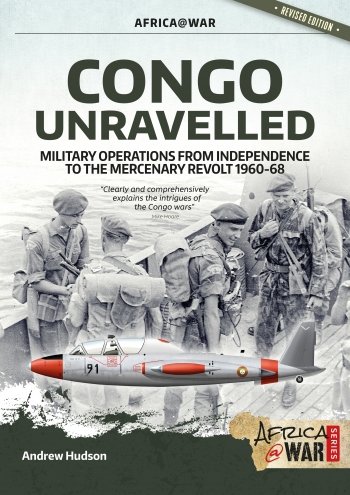-
Załączniki bezpieczeństwa
Załczniki do produktuZałączniki dotyczące bezpieczeństwa produktu zawierają informacje o opakowaniu produktu i mogą dostarczać kluczowych informacji dotyczących bezpieczeństwa konkretnego produktu
-
Informacje o producencie
Informacje o producencieInformacje dotyczące produktu obejmują adres i powiązane dane producenta produktu.HELION
-
Osoba odpowiedzialna w UE
Osoba odpowiedzialna w UEPodmiot gospodarczy z siedzibą w UE zapewniający zgodność produktu z wymaganymi przepisami.
Post-independence events in the Republic of the Congo are a veritable Gordian knot. The ambitions of Congolese political leaders, Cold War rivalry, Pan- Africanism, Belgium's continued economic interests in the country's mineral wealth, and the strategic perceptions of other southern African states all conspired to wrack Africa's second largest country with uprisings, rebellions and military interventions for almost a decade. Congo Unravelled solves the intractable complexity of this violent period by dispassionately outlining the sequence of political and military events that took place in the troubled country. The reader is systematically taken through the first military attempts to stabilize the country after independence and the two distinguishing military campaigns of the decade - the United Nations military operations (Opération des Nations Unies au Congo, or ONUC) to end the secession of the Katanga Province, and the Dragon Operations led by Belgian paratroopers, supported by the US Air Force, launched to end the insurgency in the east of the country - are chronicled in detail. Finally, the mercenary revolt - an event that tainted the reputation of the modern mercenary in Africa - is described. Lesser known military events - Irish UN forces cut off from the outside world by Katangese gendarmes and mercenaries, and a combined military operation in which Belgian paratroopers were dropped from US Air Force C-130 Hercules aircraft and supported by a mercenary ground force to achieve humanitarian ends - go far toward resolving the enigma surrounding post-independence Congo.
AFRICA@WAR SERIES At any given time, there are at least half a dozen conflicts taking place in Africa, from civil strife and brutal insurgencies to full-blown conventional wars. Yet, apart from the grand campaigns and battles of colonial yesteryear—Omdurman, Isandlwana, Spioenkop et al—little is known outside the Dark Continent of the plethora of brushfire wars that occur with monotonous regularity. Following the Second World War, with the colonial powers—Britain in particular—looking to divest themselves of their burdensome empires, the ‘winds of change’, fuelled by the Cold War, swept through every nook and cranny of the continent. From Algeria to South Africa, from the Congo to Kenya, the continent literally erupted in conflict. Butchery and barbarism, under the guise of Black Nationalism, became bywords of African insurgencies; the tactics of terror, so espoused by Chairman Mao, one of the principal backers—in competition with Soviet imperialism—of African liberation movements, became standard operating procedure. Africa—the continent that gave the world ‘pseudo’ counterterrorist operations as developed in Kenya to combat the Mau Mau, the Rhodesian Fireforce concept, radical innovations in vehicle mine-proofing, South African armour which fought the Cubans to a standstill at Cuito Cuanavale in the largest continental tank battle since Alamein, MiG and Mirage dogfights over the skies of Angola—is not all doom and gloom: it is as rich in its cultural diversity as it is in its martial traditions. Apart from a colourful array of liberation movements, mercenaries, brigands, pirates and terrorists, the cast includes such legendary units as the King’s African Rifles, the Portuguese Flechettes, the French Foreign Legion, the Rhodesian Selous Scouts and SAS, and the South African Recces, 32 Battalion and Koevoet. Africa@War, a ground-breaking series, studies Africa’s post-1945 conflicts and military players in an informative and entertaining manner, examining some of the lesser known campaigns and shedding new light on some of the better known operations.








